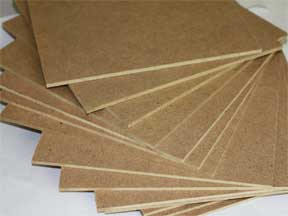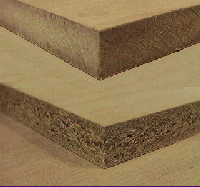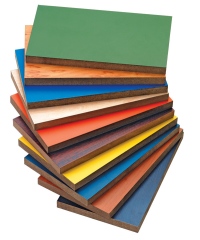|
| |
Interior design : What is
MDF-Medium Density Fiberboard. ?
Main
Article page |
Beauty articles
|
Health page |
Computers|
Diseases |
Education |
Entertainment |
Family
Business |Fitness|
Fruits and Vegetables
|
Jobs |
General |
Personality|
Technology
|
Tourism |
Sports
House Plans |
House Loans |
Real Estate|
Vaasthu
Shastra|
Construction Tips
Engineering page
| Interior Design |
Property Buying Tips |
Renting Tips |
Journals /
Magazines
Education | List of Colleges |
Entrance

MDF belongs to the hardboard family of
products which are made from wood fibers glued under heat and pressure. Medium
Density Fiberboard typically has densities between 33 and 50 pounds per cubic
feet while High Density Fiberboard (HDF) ranges between 50 and 80 pounds per
cubic feet.
Medium Density Fibreboard (MDF) is an engineered
wood-based sheet material made by bonding together wood fibres with a synthetic
resin adhesive. MDF is extremely versatile and can be machined and finished to
a high standard. As a result, MDF has replaced solid timber as a low-cost
alternative in a wide range of applications across industry.
The majority of MDF is mainly composed of
softwood, although some brands may contain a higher percentage of temperate
hardwood if this is locally available to the manufacturer. High levels of
hardwood can be found in MDF board from outside the UK and Ireland.
The most common binder for boards intended for
dry environments is urea-formaldehyde. Other binders may be used depending on
the grade of board and its intended end-use. For example, melamine
urea-formaldehyde, phenolic resins and polymeric diphenylmethane diisocyanate (PMDI)
are generally used in boards that require an improved moisture resistance. PMDI
binder is not formaldehyde-based and consequently does not emit any
formaldehyde. The exact constituents of an MDF board will vary from product to
product.
Q: What properties does MDF exhibit?
A: MDF has many qualities that make it an ideal
replacement for plywood or particle board. It is dense, flat, stiff, has no
knots and is easily machined. Its fine particles provide dimensional stability
without a predominant "grain" (as is the case with lumber). Unlike most plywoods,
MDF contains no voids, and will deliver sharp edges with no tearout.
Below are some metrics for MDF and other types
of wood. Ex: Weight of MDF board. As you can see, MDF is very dense and heavy,
but is not as stiff as other types of wood which is why bracing is suggested.
| Wood |
Modulus of Elasticity
(in million pounds per square inch) |
density
(in pounds per cubic feet) |
weight of 4x8 sheet
1/2" thick (in pounds) |
| MDF |
0.53 |
48 |
75-85 |
| Oak |
1.55 |
38 |
60-70 |
| Pine |
1.3 |
29 |
45-50 |
| Plywood |
1.2 |
33 |
45-55 |
The modulus of elasticity (MOE), also called
Young's modulus, is the ratio of stress to strain, where stress is the force per
unit area placed on the item and strain is the deformation caused by the stress.
The MOE is therefore a measure of stiffness.
Q: What does MDF look like?
does MDF look like?
A: Here is an image of a birch veneered MDF
board on top and for contrast an image of veneered particle board below. Notice
the much larger and obvious particles.
Q: Are there any
drawbacks to using MDF?
A: While MDF has been in use for almost 30
years, it is only now becoming available to the general public. Finding MDF may
end up being the single toughest part of using it. As its density implies, MDF
is very heavy and thus potentially difficult to handle.
Q: What are the safety issues to consider when
working with MDF?
A: MDF is typically made with urea-formaldehyde
resin totaling 9% by weight. While most people will not be affected by this,
people sensitive to formaldehyde emissions should consider low formaldehyde or
formaldehyde-free MDF, or consider methods of controlling these emissions
through proper finishing. Finishes that work best at controlling formaldehyde
emissions are solid add-on surfaces such as high pressure laminates, vinyl
covering, and finished wood veneers. Less effective at controlling emissions are
simple seal coats, oil and latex paints, danish oil, and wax. Plum Creek makes
low-formaldehyde MDF, while Medite II and Medex from Medite Corp. are
formaldehyde-free MDF.
Dust is another MDF hazard. The large amount of
dust released when working MDF makes proper respiratory and eye protection
mandatory. At a minimum use a dust mask. A respirator is preferable. Shop dust
collection (or even a ShopVac) would greatly help the removal of dust from not
only the air but also the working surfaces, making them easier to see. Goggles
should always be worn while using tools.
Q: Is all MDF the same?
A: No. MDF from different sources will vary in
texture, density, color, etc.
Q: How is MDF sold?
A: MDF is manufactured in sheets up to 8ft x
25ft. Typical consumer level sheets are 4x8 or 5x8 and 1/2 inch, 3/4 inch and 1
inch in thickness. Thicknesses can also be metric - an important consideration
when considering the use of English system tools (such as router bits). MDF is
also available with a variety of veneers and laminates pre-applied, which may
affect its actual thickness.
Q: What about MDO, particle board, hardboard,
void-free plywood?
A: Medium Density Overlay
and High Density Overlay are plywood products with a resin impregnated paper
coating. They are often used for exterior painted surfaces. These are not fiber
based products.
Likewise, particle board is not fiber based; it
is a solid wood composite product. Along with flakeboard and other engineered
lumbers, composite products are made from wood flakes, chips, splinters, etc.,
formed into layers and held together by resin glues and heated under pressure.
Being layered and consisting of larger chunks, particle board does not have the
uniform texture of MDF.
While MDF is a hardboard, the term hardboard is
often used to refer to 1/8 or 1/4 inch thick HDF, usually containing a screen
pattern on one surface. As previously mentioned, this is commonly referred to as
Masonite.
Plywood is made from an odd number of lumber
plies, each layer having a grain direction at right angles to the previous
layer. This arrangement provides a dimensionally stable product. Void-free
plywood uses plies with supposedly no holes, thus the completed plywood has in
theory no voids. Baltic birch plywood is often sold as void-free plywood though
some users have encountered small voids in these products. Be sure to ask
specifically for void-free plywood if this is what you are looking for.
Q: What should I use to cut and mill MDF?
A: MDF can be treated much like a fine grained
hardwood. Its high glue content means that steel cutting tools will dull VERY
quickly; thus the use of carbide tools is highly recommended. Always keep your
tools sharp for efficiency and safety.
The following recommendations are from the The
National Particleboard Association publication:
- For general shop or table saw use with
decent cut and good blade life, a 50 tooth, 10 inch combination blade may be
used.
- For those demanding a better cut, consider
a 60 tooth, 10 inch blade with alternate top bevel (ATB) teeth at 15
degrees, 10 degree positive hook, 5 degree side clearance, 10 degree outside
diameter clearance, and low approach angle (blade projecting no more than
0.5 inch through top of material).
- For an even smoother cut, consider an 80
tooth, 10 inch blade with 15 degree ATB, 10 degree alternate face bevel, 15
degree positive hook, and 7 degrees side clearance. This is costlier and may
result in a shorter blade life.
Q: Where can I find MDF?
A: Availability varies geographically so there
is no simple answer to this question. Hobbyists have found MDF from a wide
variety of sources including, but not limited to :
- large warehouse style supply dealers (Home
Depot, Lowes, etc)
- small local lumber yards
- cabinet shops who buy in large quantities
and are willing to part with some
- surplus building supply dealers
As MDF becomes more popular you will see it more
and more in your local hardware stores. Sometimes, they will only have smaller
2x4 pieces or 1x4 pieces designed for use as shelving, so be sure to look around
or ask.
Beware of clueless store clerks trying to pass
plywood, particle board or MDO as MDF ! Note that many lumber yards can special
order MDF but may not realize this, so it never hurts to ask. Ask them to check
their price book for availability.
Q: What kind of joints can I use?
A: Because MDF can be milled to just about any
profile, there are many possible joints. However, not all make sense in the
context of speaker building.
- butt - this simplest of joints may not be
ideal for furniture but works very well for building speakers, especially
when combined with biscuits (for alignment) and screws (for holding strength
while the glue dries).
- miter - works well when using pre-finished
MDF (veneered or laminated) thus leaving no exposed unfinished surfaces.
- lock-miter, dovetail and other routered
joints - works just like lumber. These joints have limited use in most
speaker enclosures.
- rabbets, dadoes, grooves and other saw cut
joints - same as with hardwood. Note that these can also be cut with a
router. These joints may be useful, depending on the design of the speaker.
- spline, biscuit, dowel - as with lumber,
the glue joint is stronger than the MDF. Dowel holes should be 0.002 to
0.003 inch larger than the average dowel diameter, and 1/32 to 1/16 inch
deeper than the actual depth used. Plain or spiral grooved dowels are
preferred over fluted or multigrooved dowels. Biscuits are very handy for
alignment of parts in addition to the additional gluing surface provided.
MDF can also be edge glued to make larger
surfaces, although this is not likely to happen except with exceptionally large
speakers. Panels can be scarfed, doweled, tongue & grooved and finger jointed.
Q: How may various fasteners be used with MDF?
A: Some typical fasteners and their uses follow
:
- staples - Do not staple within 3/4 inch of
any corner. Coated staples hold better than smooth staples. Use a finer wire
staple if splitting is a problem. Drive at right angle to the surface to
avoid bending.
- nails - The same rules apply to nails as
they apply to staples. Use ring-shank nails to avoid fiber raising around
the nail head; do not use smooth nails.
- screws - Drill pilot holes between 85 % and
90 % of the root diameter of the screw used and at least as deep as the
screw. Untapered sheet metal screws with constant size shank are good, as
are some untapered wood screws. Pilot hole sizes and minimum edge distances
for common screw sizes are :
- #6 screw - 3/32 inch pilot - 1/2 inch
edge distance
- #8 screw - 7/64 inch pilot - 5/8 inch
edge distance
- #10 screw - 1/8 inch pilot - 1 inch
edge distance
Do not rely solely on the above fasteners for
building speaker enclosures. This is especially true for butt joints. Combine
glue with screws for a simple and strong joint.
Q: What kinds of glues can I use with MDF?
A: Good glues to use are gap-filling glues such
as polyvinyl acetate (PVA) typically known as yellow glue, modified PVA glues
like Titebond II or white glues. Epoxy, urea and hot melt glues may also be
used.
Q: How can I finish my MDF ?
A: For that finished look, there are many
options requiring different levels of woodworking skills.
- May be painted. Be sure to seal and
prime the surface before painting to ensure even absorption on all surfaces.
A high gloss piano finish can be made with combinations of spray enamel,
spray lacquer or other topcoats. A little experimentation at this juncture
can be very rewarding.
- May be laminated. Options include melamine,
Formica, or even contact paper. Be sure the surface is clear of dust before
applying any laminate.
- May be veneered. Carried out properly,
veneering can yield a very professional looking Refer to the
references below for veneering info. A veneered surface can be finished with
lacquer, varnish, oil or wax depending on individual taste. Stains and dyes
may be used to modify the color as desired.
 Note
that raw MDF is very porous. Use a generous amount of glue to ensure a proper
bond. Note
that raw MDF is very porous. Use a generous amount of glue to ensure a proper
bond.
Veneered MDF
In modern construction, spurred by the spiralling costs of hardwoods
manufacturers have been engineering new and better ways to achieve a high
quality finishing wrap covering over a standard MDF board. This is known as a
Wood veneer. The most common type of Veneered MDF is by using Oak.[11] This is a
highly complex
 procedure
which involved taking an extremely thin slice of hardwood (approx 1-2mm thick)
and then through high pressure and stretching methods they are wrapped around
the profiled MDF boards. This is only possible with very simple profiles because
otherwise when the thin wood layer has dried out, it will break at the point of
bends and angles. procedure
which involved taking an extremely thin slice of hardwood (approx 1-2mm thick)
and then through high pressure and stretching methods they are wrapped around
the profiled MDF boards. This is only possible with very simple profiles because
otherwise when the thin wood layer has dried out, it will break at the point of
bends and angles.
Pre-Laminated MDF
is a Medium Density Fibre Board, laminated on both
surfaces by synthetic resin-impregnated base papers under the influence of heat
pressure. Pre-laminated MDF boards are available in Interior and Exterior
Grades, in both One side Laminated (OSL) and Both Side Laminated (BSL)
varieties.
Pre-laminated MDF can be used
for Modular Furniture, Computer Table, Office Furniture, Dressing Table, TV
Trolley, Pre-laminated Doors etc.
( Reference :
www.diyaudioandvideo.com/,
www.hse.gov.uk )
Articles:
-
Construction: What is epoxy
based paint?
-
Guidelines and tips: To find a reliable Builder or
Contractor
-
Guidelines & tips
before you start house construction
-
What is top-up housing loan ?
-
Home improvement tips:
Wallpaper for interiors
-
Benefits of rainwater
harvesting in homes
-
Tips & guidelines: Electricity Saving at home
-
Coming Up With Landscaping Ideas
-
How to set out a building on site
-
Interior design: The Rebirth of Wallpaper
-
What
is
Green Building ?
-
What is Domestic biogas plant ?
-
Why home insurance is very important in India?
-
How To Install a Home Wind Turbine
to get energy
-
How to Install Electric Wiring
-
Significance of Home Plumbing
-
Should I buy or rent? A simple calculation
-
Easy Landscaping Tips for Beginners
-
Construction technique:
Rapidwall technology
-
Buying a flat? Don't get carried away by the sample
-
30-storey hotel built in just 15
days
-
Is it worth buying an old
house
-
House plans, home plans, plans, residential plans
-
House Loans, home loans, where to get housing loan
-
How do loans work, the basic concepts of loans
-
Construction Tips, construction guide lines,
-
house rental tips, rental tips, renting properties
-
Real Estate
-
Flooring
-
What is Reverse Mortgage
-
Guidelines to purchase residential properties
-
Lotus-shaped 91 feet prayer hall in kerala
-
What is Interior Design, interior desings, resources
-
Interior Design Colleges
-
Interior Design- Bed Rooms
-
Interior Design- Bath Rooms
-
Kitchen Designs, kitchens
-
Modern Architectural Design Softwares
-
Landscaping Designs landscape architectures
-
-
|
|
| |
|




 does MDF look like?
does MDF look like?
 Note
that raw MDF is very porous. Use a generous amount of glue to ensure a proper
bond.
Note
that raw MDF is very porous. Use a generous amount of glue to ensure a proper
bond.  procedure
which involved taking an extremely thin slice of hardwood (approx 1-2mm thick)
and then through high pressure and stretching methods they are wrapped around
the profiled MDF boards. This is only possible with very simple profiles because
otherwise when the thin wood layer has dried out, it will break at the point of
bends and angles.
procedure
which involved taking an extremely thin slice of hardwood (approx 1-2mm thick)
and then through high pressure and stretching methods they are wrapped around
the profiled MDF boards. This is only possible with very simple profiles because
otherwise when the thin wood layer has dried out, it will break at the point of
bends and angles.